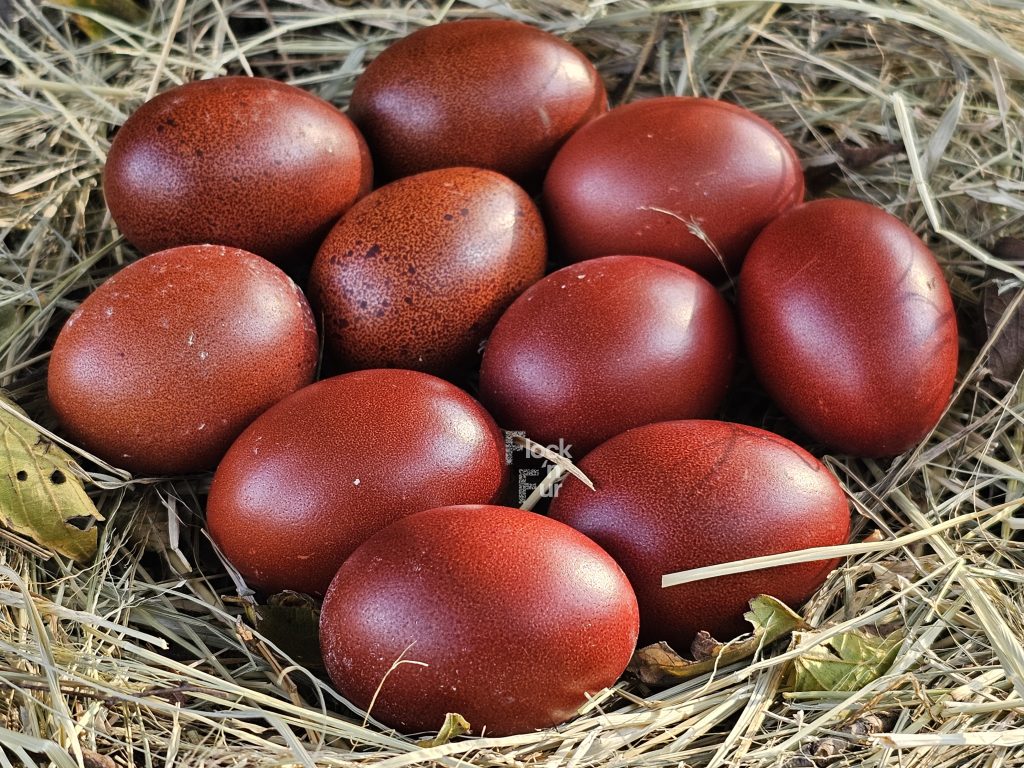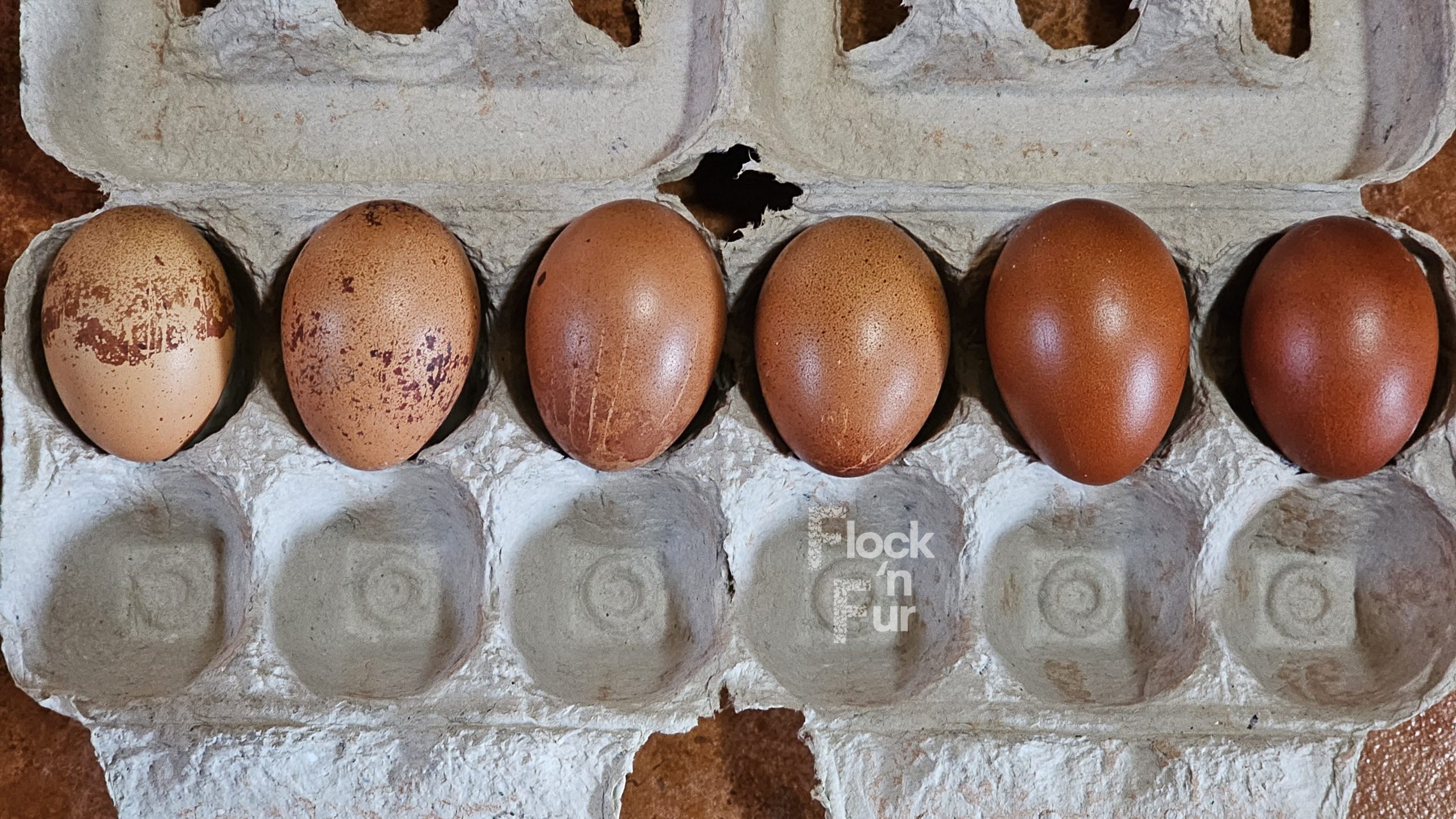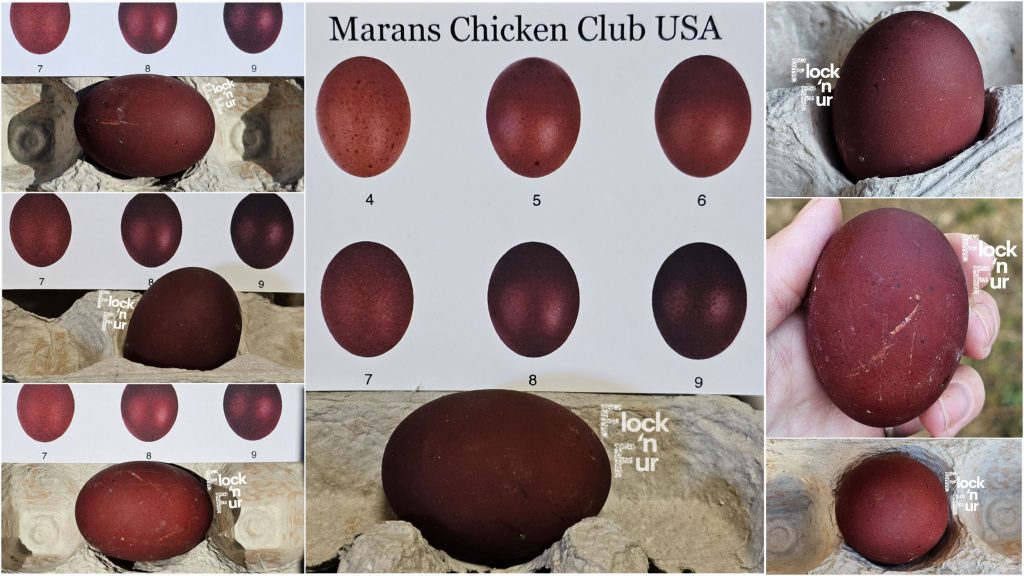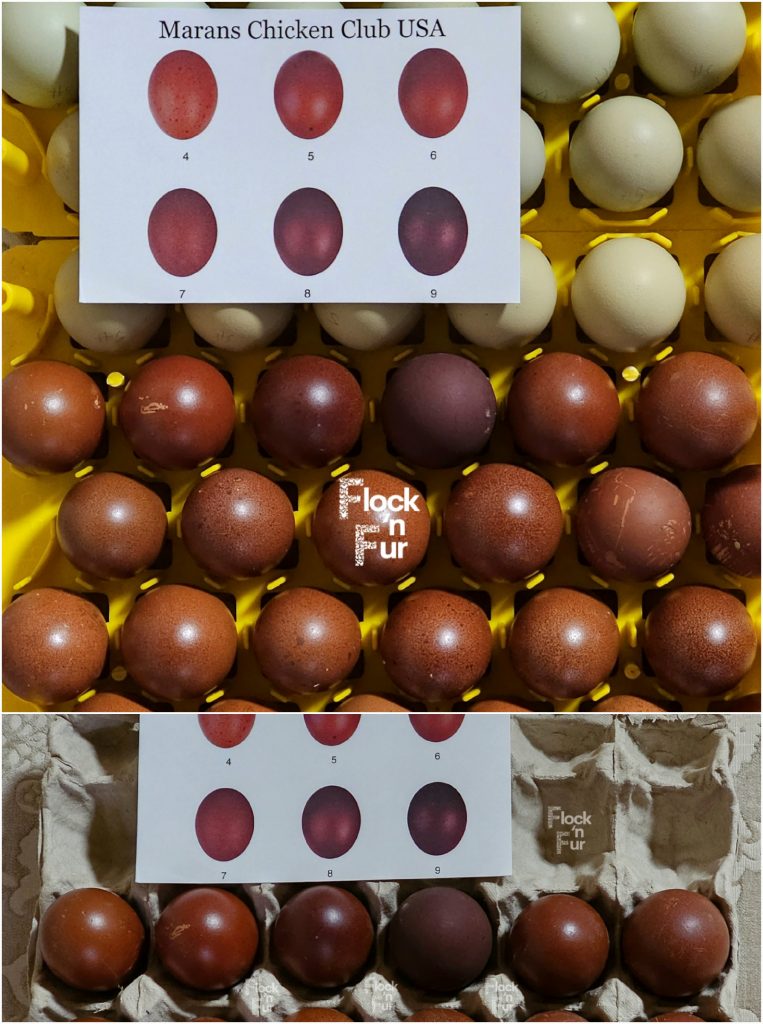
The Marans chicken breed is known for their rich, dark brown eggs. Originating from the town of Marans in France, these birds are prized primarily for their unique egg colour. It is important to note that an individual hen’s egg colour can change over time. Their eggs typically lighten during the breeding season and after a break, they darken again.
For the past couple of years, we have been collecting bloodlines and at first focused primarily on breeding Marans. They have flaws and are still far from the ideal Marans that we’re aiming for, but we are satisfied with the current progress. – all better than our parents stock from the previous season.

We specialise in the Black Copper Marans variety, but also have some of the Black Marans colour variety.

Same as with green and blue eggs, lighting also plays a significant role in Marans eggs. The colour change in different lighting is even reflected on the colour chart provided by the Marans Chicken Club US, as shown in some of the photos at the bottom of the page. It is also important to note that a freshly laid egg is typically more red, and in a week or two, it will turn slightly more brown, thus also contributing to the colour shifts of the actual eggshell.
Only a handful of breeders have ever encountered a dark, #9 egg. These eggs are exceptionally rare, even for the most devoted breeders. Generally, the colour scale for eggs ranges from 4 to 7. This is not only the case here in South Africa but also internationally. The main reason we often see so many photos of 8+ eggs is that people typically photograph and share them when they occur.


As an example of inconsistent egg colour from the same hen, these are the first six eggs that a single pullet laid over a three-week period – oldest (first egg she ever laid) on the left and newest egg on the right.
What is the number on the colour chart of the darkest egg that we have ever obtained? You be the judge. Here is the same egg in quite different shades of lighting.


